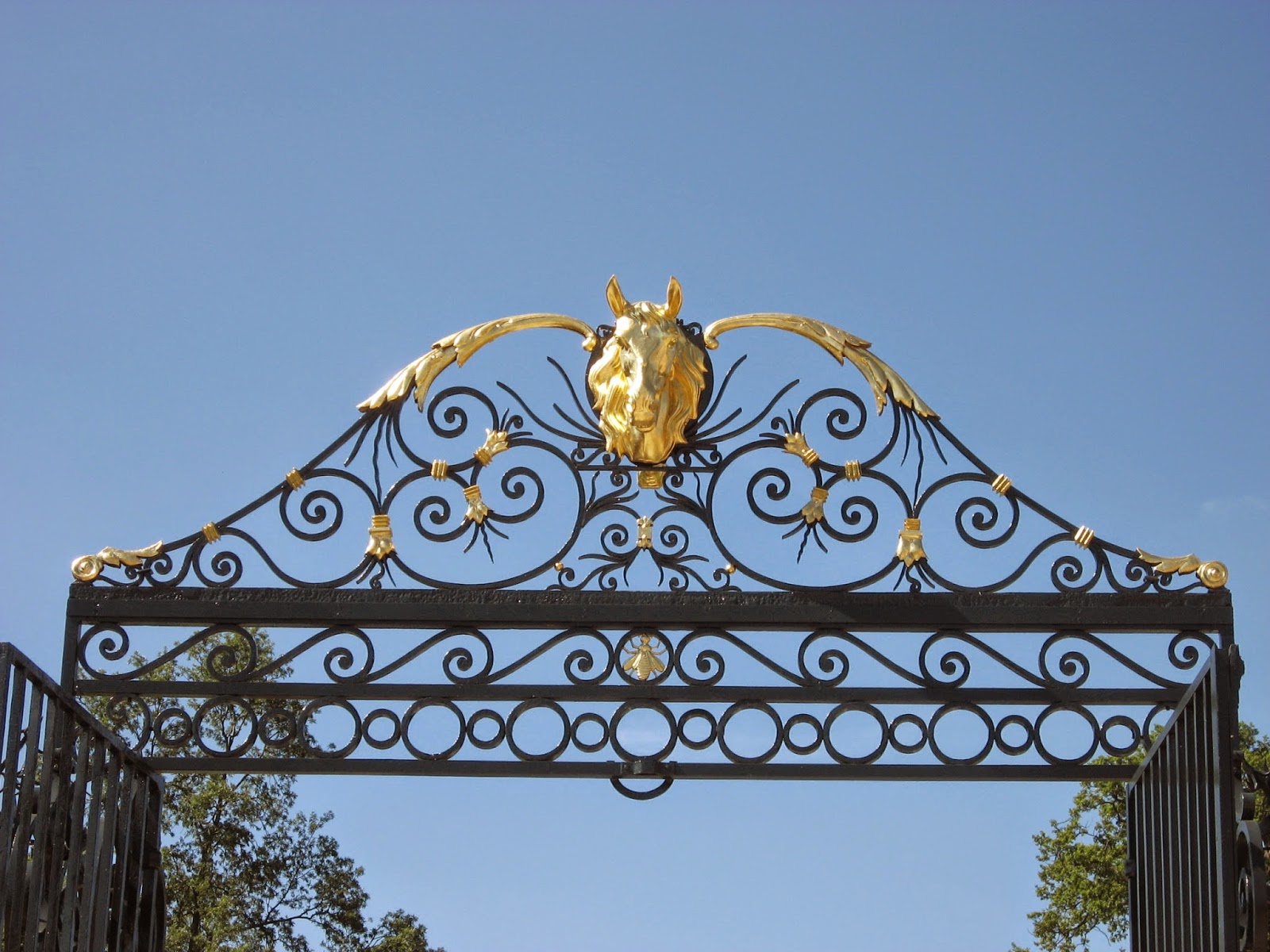The Haras du Pin, the French National Stud founded in 1715 by decree of the Sun King, Louis XIV, is also known as "the Equestrian Versailles". The superb estate and buildings bear witness to the respect in which man holds his "most noble conquest". The stables fan out in a horseshoe shape around the majestic courtyard, and house about forty breeding stallions of ten different races.
The day started off as overcast and the wind was chilly, but when 3:00 came round, it was HOT watching the show! We wore our hats in whichever direction would protect our delicate skin the most.
This was not a hockey game, but a "Zamboni" was dragged around the grounds to "resurface" the sand. Tried and true technology.
Then all these beautiful breeds of horses came on display!

Two acrobats gave us a show as well.
When horses from the Cadre Noir showed up, somehow they really stood out. Cadre Noir is a dressage and jumping school, while the Haras du pin is a breeding farm.
Link to our visit to Cadre Noir in 2012:
Video of horses from the Cadre Noir.
The Haras du Pin, situated in the village of Pin-au-Haras in the Orne region, is a symbol of French excellence in horse breeding, and is the most ancient and prestigious of the national studs. Visitors who go there experience a veritable discovery of the elegant equestrian world in an incomparable historic setting. Students follow a didactic course on the different gaits, breeds, anatomy and even equestrian specialities.
 |
| Pony pulling cart. |
 |
| Even a donkey showed up for the parade! |
 |
| Mother Percheron and her colt. |
Les jeudis du Pin (The Pin on Thursdays) : The Stud has built its reputation around four exceptional breeds : the Percheron, the Trotteur Français, the Selle Français and the English Thoroughbred. Together with the collection of horse-drawn vehicles, they are the centre of displays that take place every Thursday afternoon from June to September.
 |
| The Pony breed with her colt. |
There are no mares around because the stallions would lose their concentration... The mares are kept on another farm a fair distance away with their colts. These mares and colts came out only when all the stallions were out of sight.
All breeding is done through artificial insemination.
All breeding is done through artificial insemination.
All the horses in the show on display as they parade round the track.
After the show, we took a guided tour around the grounds and stables.
Gardens that have some resemblance to Versailles.
 |
| Harnesses, bridles, and other equestrian tack. |
This is the grave site of Furioso, a well-known and well-loved horse. He sired more than 300 horses and was buried standing up, a great honour for a horse. France no longer allows animals to be buried in these grounds.
Various carriages used throughout the years.
I've never seen a horse brand on the back like this, just on the flanks. Is it to hide the brand under a saddle?
 |
| Hey pretty boy, what's for dinner? |
A little video of the final pass-by.
Reflection on the day: We stopped at La Tête Au Loup for lunch, a restaurant only 500 metres from Haras du Pin. The setting was delightful and the food was traditional and delicious. Unfortunately, the service was very slow, probably due to having too many people for too few servers and only one chef. In any case, after being there for over 2 hours we had just had our entrée (I had the lox and Karl had the terrine) and our main course (I had the fish in a beautiful sauce and Karl had the chicken in a cassoulet), we decided to leave without having had our dessert which would have been crème brulée with Calvados. If ever you visit the Haras, please note that you can bring a picnic or buy a quick quiche or sandwich at the Entrance. Had we done this, we wouldn't have missed seeing the Museum. The annoying part is that I mentioned upon arrival that we were in a rush and the owner suggested we choose from a particular menu to get quick service, which we did. Unfortunately, that choice wasn't very quick after all. And the cost was rather steep.
This is a black and white photo of the restaurant La Tête Au Loup taken many years ago. The area is called "Wolf's Head" because back in King Louis XIV's day, the last of the wolves was killed and his head displayed on a spike for all to see. The grounds had originally been used as a hunting area and wolves were not welcomed.
Anecdote of the day: As we were touring the stables, I asked our guide what breed of horse is eaten in France. She looked at me with very sad eyes and replied, "Unfortunately, all of them."










































No comments:
Post a Comment